The multiplicity and concentration of positive solutions for the Kirchhoff-Choquard equation with magnetic fields
Li WANG(王莉)
College of Science,East China Jiaotong University,Nanchang 330013,China E-mail : wangli.4230163.com
Kun CHENG(程琨)
Department of Information Engineering,Jingdezhen Ceramic Institute,Jingdezhen 333403,China E-mail : chengkun0010@126.com.
Jixiu WANG(汪继秀)+
School of Mathematics and Statistics,Hubei University of Arts and Science,,Xiangyang 441053,China E-mail : wangjiaxiu12r@aligun.com
1 Introduction and Main Results
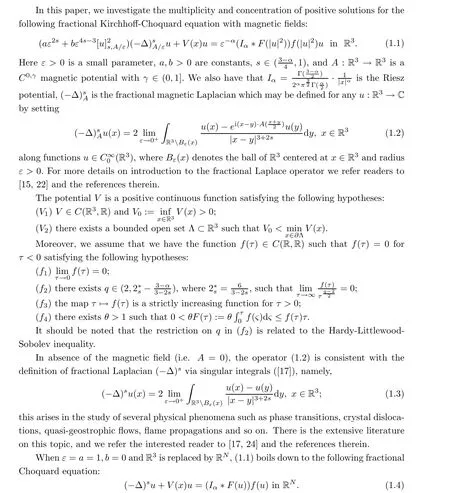
d’Avenia et al. [14] studied the existence, regularity and asymptotic behavior of solutions to(1.4)for when f(u)=upand V(x)≡const. Foe when V(x)=1 and f satisfies Berestycki-Lions type assumptions, the existence of ground state solutions for a fractional Choquard equation was established in [29]. Recently, the author of [6] studied the multiplicity and concentration of positive solutions for (1.4) under local conditions on the potential V(x).

around the local minimum of V as ε →0. We must note that, in [25], the assumptions on the decay of V and the range for p ≥2 are optimal. In [9], the authors considered the ground state solutions of the Choquard equation (1.6) in R2. By variational methods, they proved the existence and concentration of ground states to(1.6)involving critical exponential growth in the sense of the Pohozˇaev-Trudinger-Moser inequality. Alves et al. [10] investigated the existence and concentration of solutions to equation (1.6) under the local potential well condition (V1)–(V2).

Remark 1.2 Our conclusion is still new even in the case that s=1 or that A=0.
The outline of this paper is as follows: in Section 2 we give the notations and recall some useful lemmas for the fractional magnetic Sobolev spaces. In Section 3, some preliminaries of problem (1.1) are given. In Section 4, we study the autonomous problem of (1.1). In the last section, we provide a multiplicity result for (1.1)via the Ljusternik-Schnirelmann category theory, and we study the concentration of the maximum points.
Throughout this paper, we will use the following notations: Br(0)={x ∈R3:|x|<r} is a ball in R3of radius r >0 at the origin;on(1)is a generic infinitesimal value. We always denote positive constants as C for convenience.
2 Variational Framework for Problem (1.1)
In this section, we outline the variational framework for problem (1.1) and give some preliminary lemmas. It is easy to see that, just performing the change of variables u(x)→u(εx),the problem (1.1) can be rewritten in the form


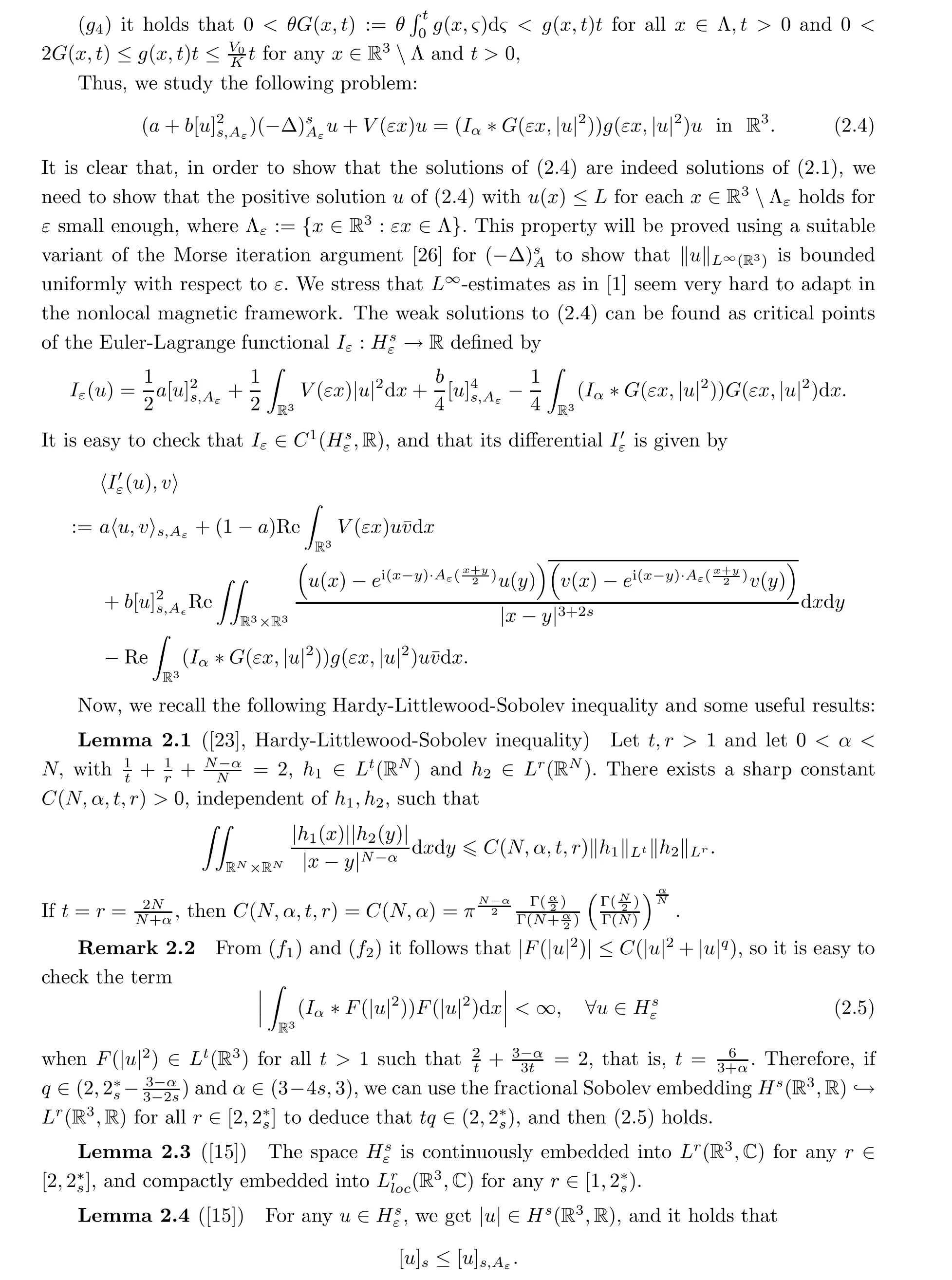

3 Preliminaries



which implies that there exists a τ0>0 (independent of u) such that τu≥τ0. Next, we show that the second conclusion holds. Assume, by contradiction, that there exist sequences

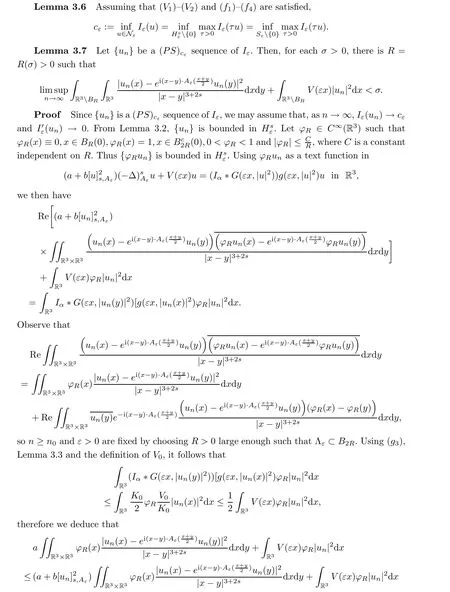





4 The Autonomous Problem
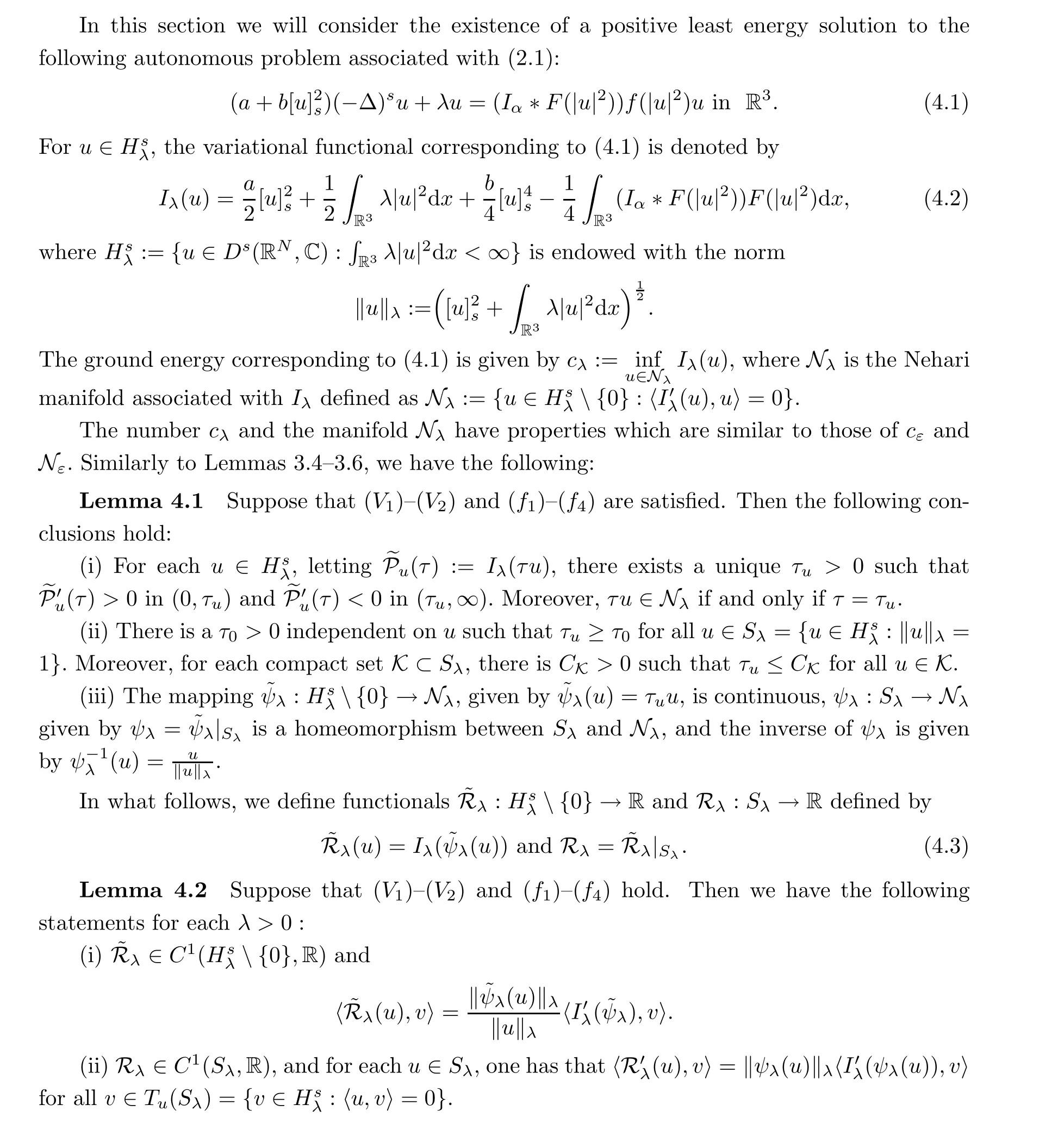


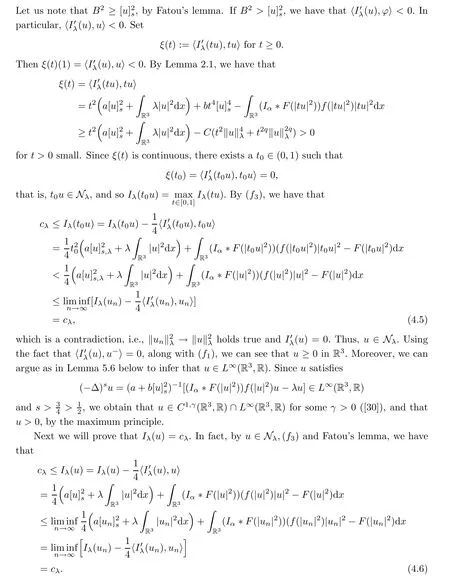


Hence, by using Ekeland’s variational principle [18], we can find vn∈Sλsuch that {vn} is a(PS)cV0sequence of Rλon Sλand that ‖vn‖λ→‖v‖λ. By Lemma 3.1,we have that{Rλ(vn)}is a (PS)cV0sequence of Iλ. It follows from Lemma 4.2 that there exists v ∈Sλsuch that Rλ(vn)→Rλ(v) in Hsλ. Taking this together with Lemma 4.1 and‖vn‖λ→‖v‖λ, we conclude that vn→v in Hsλ. □
5 The Proof of Theorem 1.1



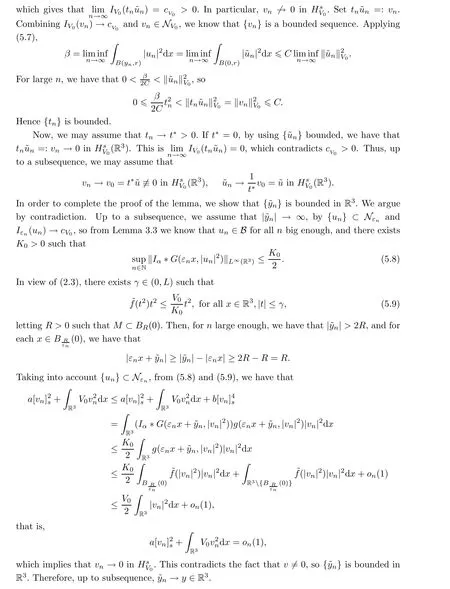

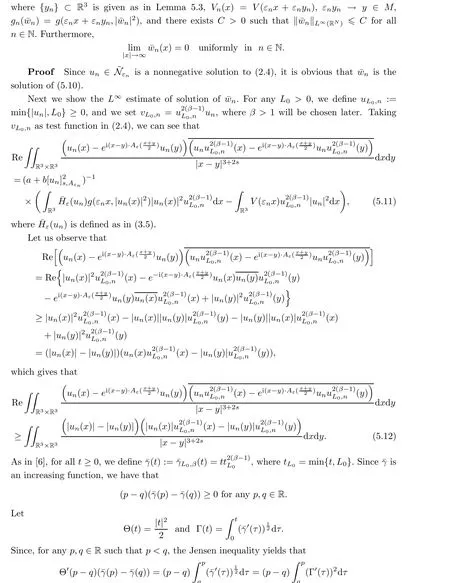



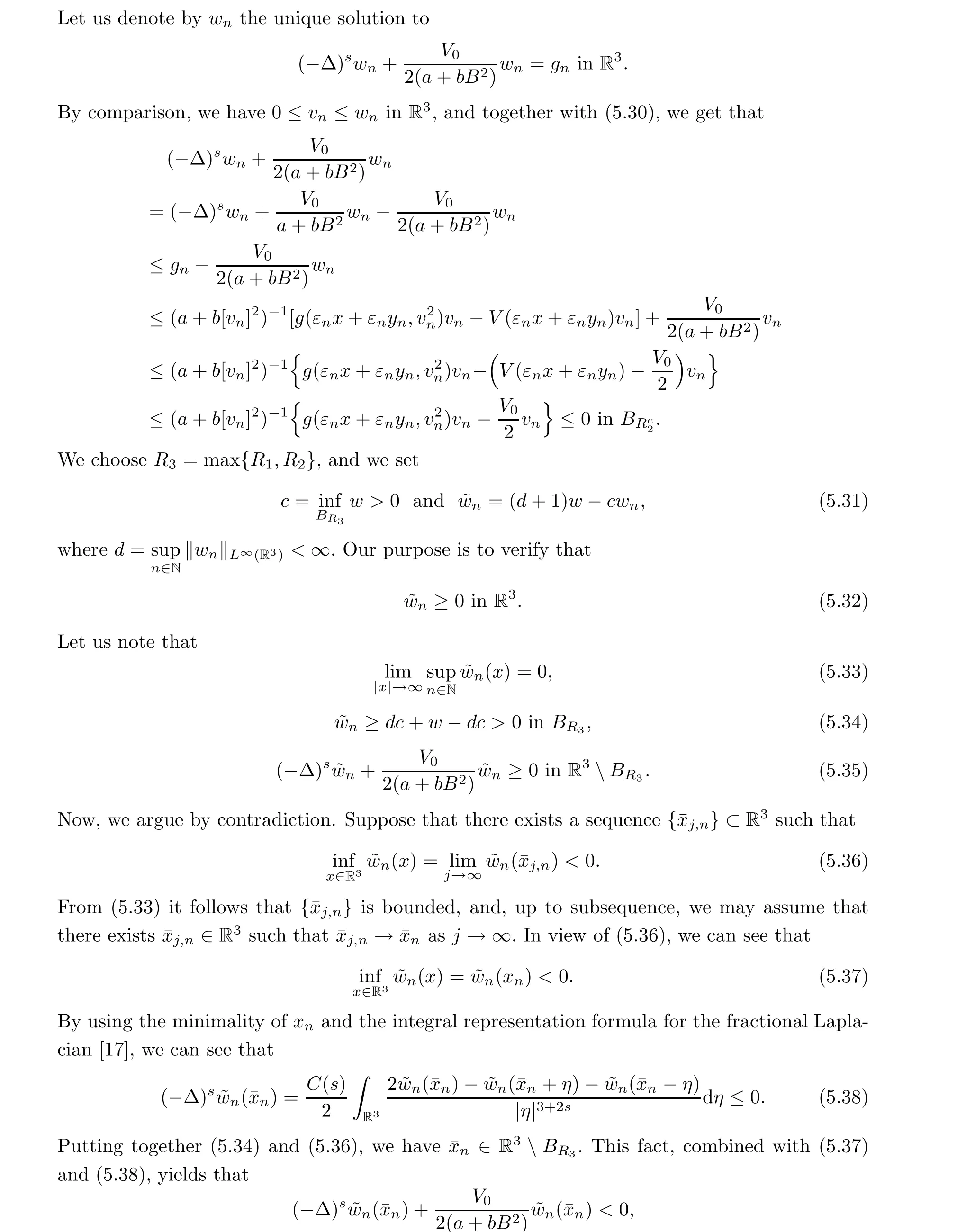

 Acta Mathematica Scientia(English Series)2022年4期
Acta Mathematica Scientia(English Series)2022年4期
- Acta Mathematica Scientia(English Series)的其它文章
- ITERATIVE ALGORITHMS FOR SYSTEM OF VARIATIONAL INCLUSIONS IN HADAMARD MANIFOLDS*
- Time analyticity for the heat equation on gradient shrinking Ricci solitons
- The metric generalized inverse and its single-value selection in the pricing of contingent claims in an incomplete financial market
- The global combined quasi-neutral and zero-electron-mass limit of non-isentropic Euler-Poisson systems
- Some further results for holomorphic maps on parabolic Riemann surfaces
- Global well-posedness of the 2D Boussinesq equations with partial dissipation
